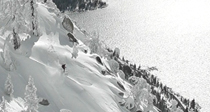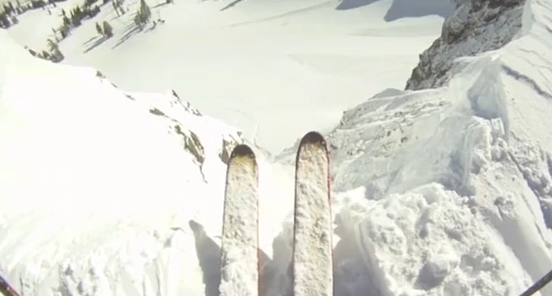By Susan Schnier
September 2006
Last January, during a monster storm in Nevada, 13-year-old Brett Hutchison was riding Chair 2 above a blue run at 40-acre Las Vegas Ski and Snowboard Resort, when a 15-foot wall of snow ripped him from the lift and buried him. Rescue workers didn’t find his body until approximately 10p.m. that night. Three days later at Steamboat, a snowboarder triggered an avalanche to skier’s left of Chute 3, on Mount Werner. Then, on the night on January 15th or morning of 16th, a slab with a five to seven foot crown broke loose under Snowbird’s GAD 2 lift —despite having been blasted and skied on that day. Unusual? Yes. But not as shocking as the 1,000-foot-long, 350-foot-wide wet slide that broke loose on May 20 on Arapahoe Basin’s bumped-out 1st Alley run, off the Pallavinci lift—which had been evaluated and deemed safe just minutes before—and killed a 53-year-old skier named David Conway.
Naturally, the incidents left many skiers wondering: How safe is it to ski inbounds?
Only five avalanche-related deaths have occurred on open terrain—anything within a resort’s boundaries that isn’t roped off—in the United States since 1985, a result of constantly refined control procedures and increased skier traffic. And the burial-death at A-Basin was Colorado’s first since 1975. Still, despite the effectiveness of military-size avy-control arsenals, open slopes can rip, and they can cause serious damage. “No matter how much you do control work on a morning you will still have sluffs during the day,” explains Squaw Valley Mountain Manager, Jimmy King. “We try to protect and educate skiers, but if you put yourself in that environment you need to know something about it.”
Avalanches are such an imminent threat, especially on the steep and deep terrain favored by today’s big mountain skiers—that, ironically, many mountains are simply opening up avy-prone terrain. Last season, Lake Tahoe’s Mt. Rose Ski Area opened the Chutes, a collection of long, steep couloirs that are accessible right off the chairlift. “One of the reasons we opened the Chutes,” says Mt. Rose’s Mike Pierce, was to deal with the fact that an increasing number if people were diving in there in unsafe conditions.” Likewise, Aspen started opening its steep and slide-prone Highland Bowl in 1997.
Despite last season’s avy oddities, the answer to whether you’re safe inbounds is, for the most part, yes. As skis get fatter and the big-mountain scene swells, resorts are increasingly more aware of potential problems. To that end, they’re putting more money into control work and investing retrieval systems like Recco. “We started making adjustments the evening of the accident,” says Las Vegas Ski and Snowboard Resort General Manager, Brian Strait. “We’re now using active explosives control in all areas in the Three Peaks drainage and we’ve increased equipment on hand and training for search and rescue workers.”
Statistics show that in-bounds avalanches are very rare and the ones last season appear to be aberrations. “These were freak accidents that ski patrol and management could not have foreseen,” says Colorado Avalanche Information Center Director, Knox Williams.
Nonetheless, snow safety professional have learned from these incidents. When the slope under Gad 2 slid, Pat Shugart, Snowbird’s Assistant Director of Ski Patrol, had never seen anything like it and called in four scientists to check it out. They concluded that it went because of the recent snow that fell on top a hard layer of ice from December. “We’re always very conservative in opening the mountain,” says Shugart. “But we’ll take the evidence from this slide and if we see those conditions again, we’ll close the lift.”




Recent Comments